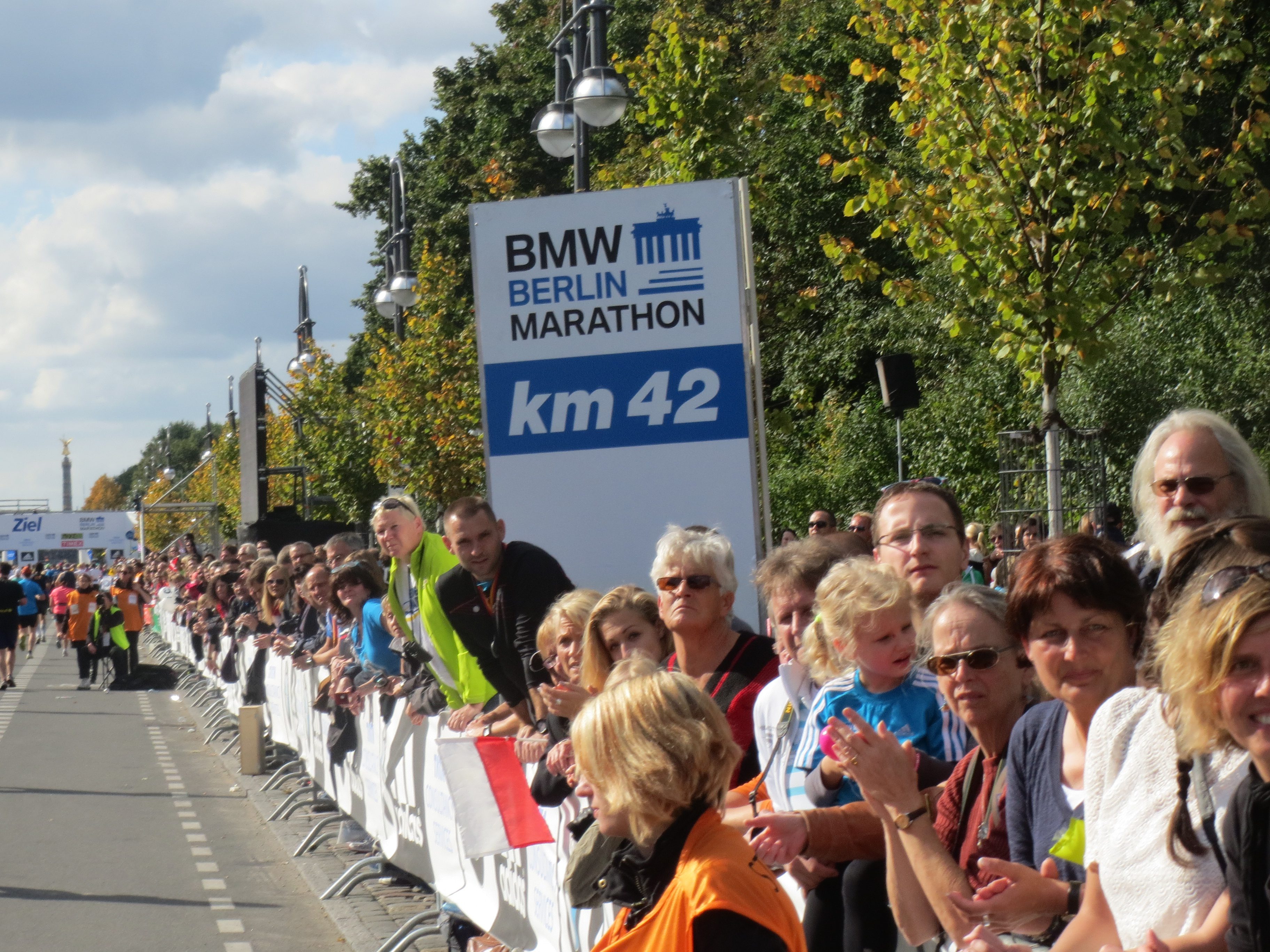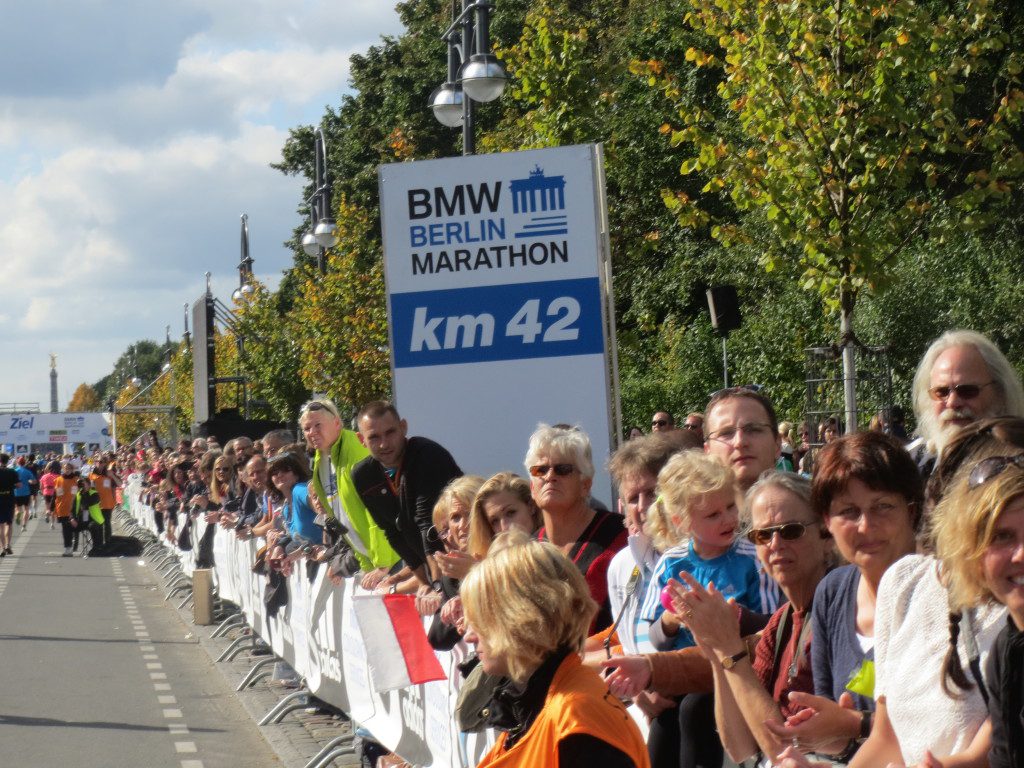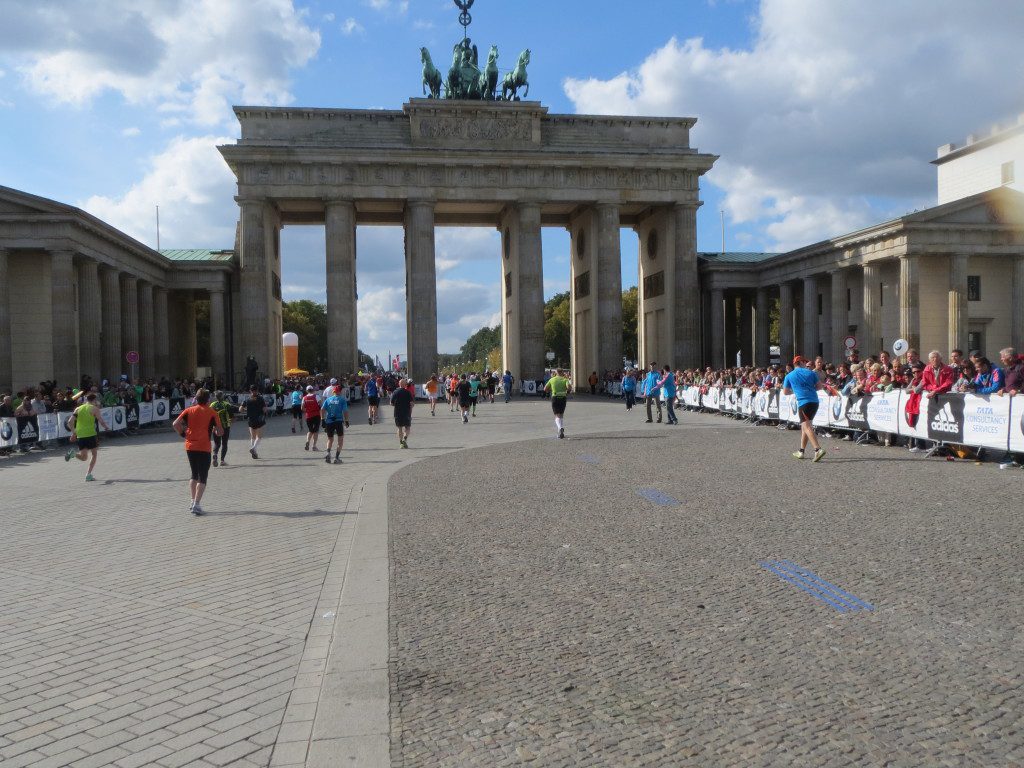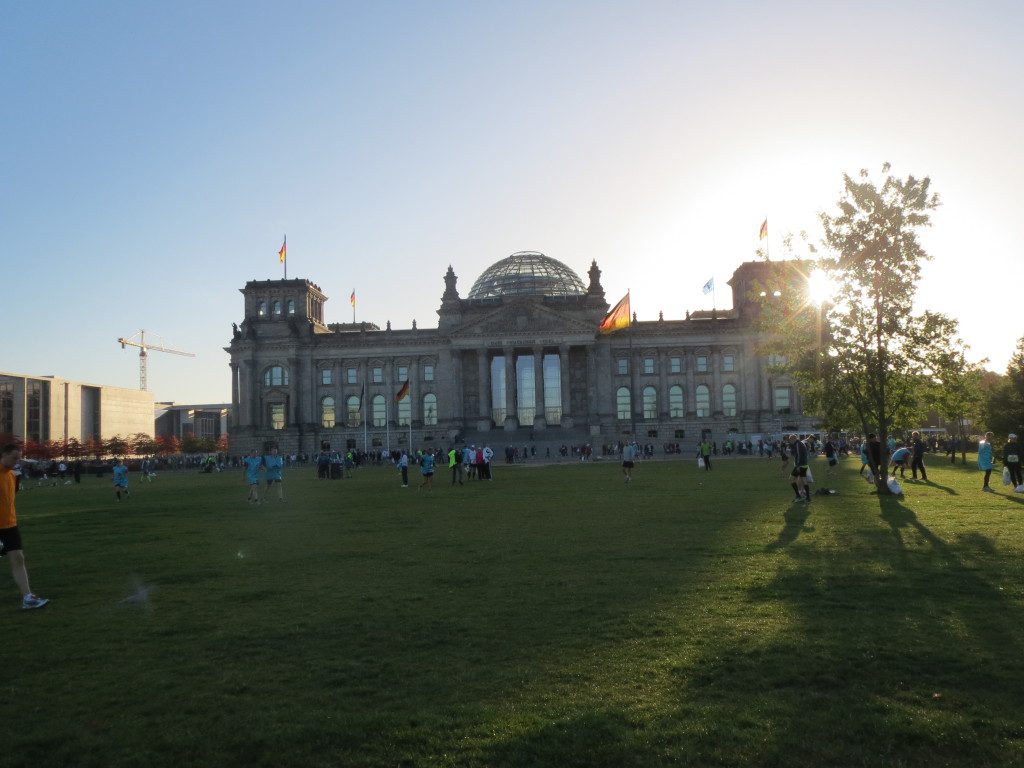Essay – the Berlin Marathon: a running tour of a complex city


By Peter McCluskey
This Sunday morning some of the greatest distance runners in the world will chase the world record at the 40th Berlin Marathon. The anticipation, the nerves and the excitement at the start will be something wonderful to behold – and I’ll be there. Well, I won’t be at the front with those hoping to run a sub-2:04 marathon, I’ll be a little further back. In section H, actually. Last year (this will be my third Berlin Marathon), I crossed the start line 36 minutes after the elites. This time I’m going to enjoy the festivities surrounding the start as much as I can, but I’m also going to use those minutes to stand back and take in the incredible historic sites surrounding me.
Related Articles:
Makau, Kipsang and Devila to run Berlin Marathon
World’s two fastest marathoners to team up for world record at Berlin Marathon
Berlin Marathon sells out in 3.5 hours
It takes my breath away to know I’m standing just a few metres from the Reichstag. For decades it was abandoned, a near-ruined symbol of Germany’s violent past. Now restored, it has once again become the national parliament and a vibrant symbol of the new Germany. It was here that the Soviet Red Army defeated Nazism at a terrible cost. The battle for Berlin, which ended at the Reichstag in May of 1945, resulted in an estimated 200,000 deaths of soldiers and civilians. When my marathon is finished, I’ll stretch out on the lawn, sip a beer and watch the afternoon sun sparkle on the glass dome.
Just outside the corrals and just behind the Reichstag is a double line of paving stones that snakes along the surrounding streets and cuts through the city. If you look closely, you’ll see little brass plates that tell you the bricks mark the course of the Berlin Wall. Most of the wall is now gone, smashed to pieces along with the totalitarian regime that built it. For nearly 40 years it was the physical reminder of the deep divisions of history. But on marathon day almost 40,000 runners will step lightly over the cobblestones enjoying the day as they pass through a united Berlin.

Just a little to the left is the Brandenburg Gate. If ever there was a symbol of German unity, it is this gate. For more than 40 years, the gate was trapped inside East Berlin, partially hidden behind the wall, just a few metres from the West, but cut off – trapped in a no-man’s land. For Germany, riven by post-war and Cold War politics, it was a daily reminder of their divided country. After the wall came down the Brandenburg Gate became the mighty and powerful ending to the marathon. On marathon day no one walks through the gate – everyone summons up enough energy to run those last few metres through the gate and down 17 de Juni to the finish line.
I thought I might share with you some of the historical places you’ll be passing during the run:
Before you even start you will have visited Templehof Airport, which was the transport hub for the Berlin airlift.
The finish line is approximately where Ronald Reagan gave his “Mr. Gorbachev tear down this wall” speech.
We’ll run through Alexanderplatz, which used to be the centre of East Berlin. In October, 1989, it was the scene of the largest peaceful demonstration ever held in the Soviet Bloc. Anywhere from 500,000 to 800,000 people jammed the square to demand that travel restrictions be eased. The demonstration probably hasn’t been given the historical attention it deserves – but many historians say that was the catalyst for all the other events in East Germany that resulted in the wall crumbling and the reunification of Germany (My Polish friends dispute this. They claim Pope John Paul II’s mass in Nova Huta was larger. I agree but it wasn’t a spontaneous demonstration).
Another famous platz we’ll run through is Potsdammer Platz. At one point it was the centre of Berlin because it was the transport junction. In 1917 a sealed train sat in Potsdammer Platz for a few days while the Germans made travel arrangements for the few people on board – V.I. Lenin and a few of his associates. The Germans sent Lenin and his colleagues to Moscow, via Finland so he could foment revolution against the provisional government in the midst of the First World War. Lenin, of course, took power and promptly signed a peace treaty with Germany.
During the last few kilometres we’ll run down Unter den Linden, which has always been a special street in Berlin. Parades have been held down this street by some of the most famous people in history: Frederic the Great, Napoleon, Hitler. Now, the MidTown Pacers can add their names to that list. During the Cold War, Unter den Linden was mostly empty of cafes, museums and people. It was the site of embassies, with the Soviet (now Russian Federation embassy) taking up an entire city block.
Finally, with just a few hundred metres to go, you come to the Brandenburg Gate.
The Brandenburg Gate was located inside East Berlin and blocked off during the Cold War. For hundreds of years it was – and is again – the symbol of German unity. Having it sealed off from the rest of Berlin was an unimaginable indignity to the German people. When the wall came down in November 1989, hundreds of thousands of Berliners, Germans and people from around the world swarmed to the Tiergarten and the surrounding streets to see the gate once again.
My favourite quote about the Brandenburg Gate has nothing to do with the emperors, kings, or sports heroes that have travelled down Unter den Linden and through its porticos, but is from the Polish journalist Ryszard Kapuscinski, who wrote in his book The Soccer War: “Our [Poland’s] war looked different and it ended a long time ago outside the Brandenburg Gate in 1945. It was a war of millions and millions… The people from my country that made it to the Brandenburg Gate can say how much victory costs.”
Running through the Brandenburg Gate is unsurprisingly a highly emotional experience for many people, from many countries, for many reasons.

The Second World War did – for all intents and purposes – end on the streets just outside the Brandenburg Gate, where the Battle of Berlin came to its symbolic conclusion in the three-day battle for the Reichstag. Even though it had been unused ever since a mysterious fire in 1933, in April – May 1945 it was the scene of one of the bloodiest battles of the Second World War. Almost every Russian home has a copy of the iconic photographs of the Hammer and Sickle being hoisted above the Reichstag.
The Reichstag has been restored and is once again the national parliament. We get to relax on its lawns after the race.
Berlin is actually about 200K inside the former East Germany. Before the end of the war the Allies decided the German capital would be divided and jointly administered by the French, British, Americans and Soviets. Because it was inside East Germany it became a simple way of escape for many Germans who simply left the Soviet sector, which they were allowed to do just by showing their identification. Once outside the Soviet sector people could legally travel to the West. The wall went up in 1961 to stop the thousands who were leaving the East every week. It was officially known as the anti-fascist barrier – meant to keep fascists out of the East.
As you walk and run the streets of Berlin you’ll see very few remnants of the old East Germany (those weird above-ground gas lines still exist, though they no longer carry gas). But they did keep some sections of wall, though in most cases they’ve moved the wall to better locations and re-erected it (There’s a very good example of Die Mauer near the Ost Banhoff). Another thing the Berliners did was to put down paving stones that exactly follow the course of the wall. So from time to time you’ll see an unexplained course of paving stones laid across a street – that’s where the wall used to be.


